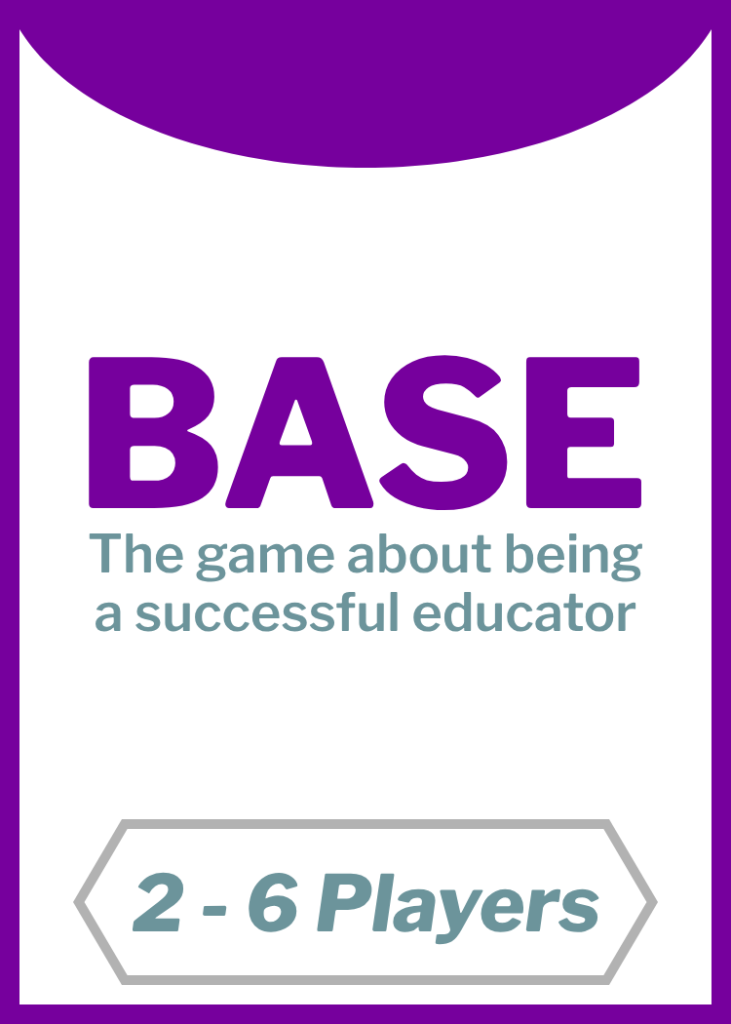BASE Board Game (Ver. 1.1)
It is the duty of an educator to teach, but it is also their duty to ensure that their students feel seen, heard, and like they belong; and to do so, educators need to provide the right environments for their students to flourish. The past few decades have taken steps to provide these environments, but as we grow together as a society, one where everyone is welcome, it has come to the attention of educators the world over that what has been done so far is not enough. Our materials, our attitudes, our thoughts, and our way of communication all have an effect on students and ourselves, a fact that has pushed the 21st century teacher into being one of compassion, empathy, and cultural awareness. We still have a long way to go, but the strides we are making today and in the future have and will create an everlasting impact on the lives of not just our students but the education system as a whole. This board game is my way of contributing to that case. Welcome to BASE (Being A Successful Educator), a game designed to teach you about diversity in the classroom, provide quotes and facts to guide you forward, and hopefully help you become a more successful educator.
Thank you for playing and I hope you enjoy.
—Justin
How to Play
BASE is designed to be a simple game, that way more people can get involved and it keeps the focus on the content. The rules are as follows:
- Place the three types of cards in their respective spots on the game board (see above for details of each type), facing down so the back of the card is visible to players.
- Players place their character tokens on any of the four corner spots.
- Players may also use any other object for their token.
- Players take turns rolling the included 4-sided die (d4), moving clockwise the number of indicated spaces, and adding points depending on the card drawn.
- Players will keep track of their score in whichever way works best for them (pen and paper, phone, abacus, etc.)
- Players will draw the card type indicated on the space.
- If a player lands on a “Question” space, a different player will draw the card and ask the question to the player who originally landed on the space. Do not read the additional text (in black) until after the card has been answered. Once the player has answered and potential points are awarded, discard the question card.
- If a player lands on an “Action” or “Quote” card, they will draw from the indicated pile. After the card has been completed, shuffle the card back into the pile on the game board to be drawn again (hopefully by another player).
- The game ends when all “Question” cards have been discarded or earlier if desired.
- Total up all your points to determine the winner. In the event of a tie, the affected players will roll the d4 until one player rolls a higher number.
While the game does contain points, this is more to add an extra element of fun. Feel free to play without them!
The Game Board
Click or tap on any of the ? icons to get info.
Card Galleries
Action Card Gallery
Quote Card Gallery
Question Card Gallery
And that is all you need to know about BASE, play around with it, learn something new, and have fun. Thank you.
References for the Cards
Brown, S. (2011, March). Doodlers, unite! [Video]. Ted Conferences. https://www.ted.com/talks/sunni_brown_doodlers_unite/
Clark, C. P. (2021, March-April). An opportunity for change: Groundbreaking scholar Gloria Ladson-Billings on culturally relevant pedagogy and why education as we know it needs to be transformed. Literacy Today, 38(5), 24+. https://link-gale-com.proxy1.lib.trentu.ca/apps/doc/A680602484/AONE?u=ocul_thomas&sid=bookmark-AONE&xid=49f8cfa7
“’Coding is the new literacy’: How STEM toys teach kids programming skills” [Video]. (2021, October 18). CNN. https://www.cnn.com/videos/tv/2021/10/18/kinderlab-robotics-imagilabs-hnk-spc-intl.cnn
Education at Illinois. (2016, February 1). 7.1 critical literacies pedagogy: An overview [Video]. YouTube. https://www.youtube.com/watch?v=fHn2GGFswww
Education at Illinois. (2016, April 16). 8.2 Design and Multimodality [Video]. YouTube. https://www.youtube.com/watch?v=fHn2GGFswww
Hammond, Z. (2020, April 1). The power of protocols for Equity. ASCD. https://ascd.org/el/articles/the-power-of-protocols-for-equity
Hargraves, V. (2020, May 25). Materials for play: Why open-ended loose parts are important. The Education Hub. https://theeducationhub.org.nz/materials-for-play-why-open-ended-loose-parts-are-important/
Kimmerer, R. (2013). Braiding sweetgrass : Indigenous wisdom, scientific knowledge and the teachings of plants. Milkweed Editions.
LiteracyDotOrg. (2009, December 30). Paulo Freire – An incredible conversation [Video]. YouTube. https://www.youtube.com/watch?v=aFWjnkFypFA
Moore, J., & Paris, D. (2021). Singing counterstories to imagine an otherwise: The authors highlight youth spoken word poetry in the context of the global pandemic and the uprisings for racial justice. English Journal, 110(4), 21+. https://link-gale-com.proxy1.lib.trentu.ca/apps/doc/A750373283/AONE?u=ocul_thomas&sid=bookmark-AONE&xid=b6337577
Simpson, L. B. (2014), Land as pedagogy: Nishnaabeg intelligence and rebellious transformation. Decolonization: Indigeneity, Education & Society, 3(3), 1–25. https://jps.library.utoronto.ca/index.php/des/article/view/22170
Will, M., & Najarro, I. (2022, April 18). What Is Culturally Responsive Teaching? Education Week. https://www.edweek.org/teaching-learning/culturally-responsive-teaching-culturally-responsive-pedagogy/2022/04
Endnotes for the Cards
1 Action Card 8 is inspired by Hammond, 2020’s protocols.

